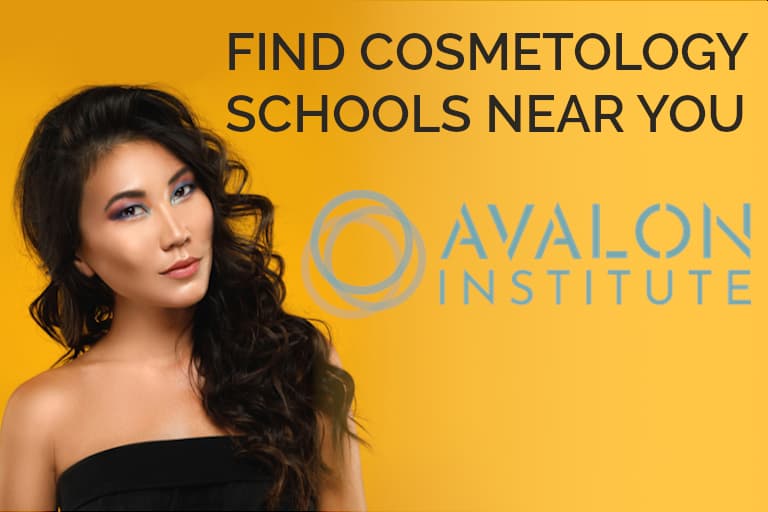Hair Braiding and Natural Hair School
Braiding, the art of interweaving three or more strands of hair into different designs, goes back thousands of years with deep roots in Black art and culture. Braiding goes beyond being beautiful, with many types of braids protecting natural hair.
In many parts of the U.S., hair braiding as a distinct profession has been underrecognized, even though hair braiding services have long been performed in communities. Hair braiding as a beauty discipline has often been regulated under the cosmetology umbrella.
Natual hair styling is often part of braiding training (or vice versa). However, consumer demand for the specialized skills of hair braiders has made this a more recognized profession in its own right.
Skip to popular topics on this page: What Does a Hair Braider Do? | How to Become a Hair Braider | Choosing a Hair Braiding School | Getting Your Hair Braider or Natural Hair License | Natural Hair and Braiding Salary and Job Growth | Hair Braiding Schools by State
Read on to find out about natural hair and braiding schools, laws, salaries, and more.
Learn More About Hair Braiding
What Does a Hair Braider Do?
Licensed hair braiders and natural hair stylists provide high-quality, long-lasting braids that look great and protect the hair. In addition, they might offer:
However, they can't chemically change hair (dyeing, chemically straightening, etc.) or provide haircuts beyond the tiny trims necessary for their work.
How to Become a Hair Braider or Natural Hair Stylist
Where you live has a lot to do with becoming a hair braider or natural hair stylist. There's been a shift over the last several years, with fewer and fewer states mandating cosmetology school completion for hair braiders—though some still do. Others issue hair braiding licenses, registrations, or specialized certifications. And many don't mandate specialized training—or any training at all. In these cases, states tend to define hair braiding as the use of tension on the hair and roots to create different styles. Training requirements for hair braiding may shift even more in the coming years, with social movements and legislation such as the CROWN Act empowering people to embrace their natural hair.What Should You Learn in Natural Hair or Hair Braiding School?
Though the exact course content may vary from place to place, natural hair styling and braiding schools cover similar topics. You should learn to perform techniques and hairstyles associated with Black hair as well as about theory and science.
It's worth noting that state lawmakers create lists of services that are permitted. Some of the terms may be a bit outdated as a result, either because the laws haven't been updated recently or because the writers of the laws aren't actively in the world of braiding and don't know the current preferred wording. With that in mind, here are a few things frequently taught in braiding schools:
Practical Skills
Theory

sponsored content, school availability varies by location

sponsored content, school availability varies by location

sponsored content, school availability varies by location

sponsored content, school availability varies by location

sponsored content, school availability varies by location

sponsored content, school availability varies by location
Should I Go to School Even if My State Doesn't Require Braider Training?
There are lots of good reasons to go to cosmetology or hairdressing school to become a braider, even if your state doesn't require it. Here are just a few:
READ MORE: Learn More About Cosmetology School
READ MORE: Learn More About Hair School
School Enrollment Requirements
Requirements vary by program, school, and state. But, to work in any beauty field, you generally have to be at least 16 years old and have a high school diploma or GED. In addition, some states might need a criminal background check or physical exam.
School Costs
Natural hair or braiding school costs vary depending on length, type, and location.
Online courses tend to be the lowest priced, with some costing less than $200 to complete. But many of these courses alone don't let you work in states where having a natural hair or braiding license is mandatory. This could be a great option if you're in a state that doesn't need any official training.
At the other end of the spectrum, some states need a full cosmetology license to work in the hair industry. The cost of cosmetology school can run up to tens of thousands of dollars. You can reduce school costs by getting scholarships.
How Long Does Hair Braiding or Natural Hair School Take?
Natural hair styling and braiding courses vary in length. Specialist programs may take a few weeks to complete, while cosmetology programs take several months. Continuing education classes, which can last a few hours or days, may let you offer these services or expand upon your skills after you've earned another license.
Can I Apprentice as a Hair Braider or Natural Hair Stylist?
Natural hair and braiding apprenticeships exist, but not necessarily in the traditional sense. If you don't need formal training, many learn by working with friends or family in their salons or homes. In places that require training, you may only be able to apprentice if the state mandates a cosmetology license.
READ MORE: Learn More About Apprenticeships
Choosing a Hair Braiding School or Natural Hair School
With so many options, picking the right braiding or natural hair school can seem daunting. Here are a few things to consider when you're making your choice.
Student Reviews
Reviews from real students are one of the best ways to get a good feel for how other graduates feel about their experiences at the school—both good and bad.
Course Offerings
Course content differs from program to program. Look at the school's curriculum and consider whether it covers everything you want to learn.
Enrollment Dates
Does the school offer an enrollment schedule that works for you? Some programs have regular enrollment dates throughout the year, whereas others may only take new students once or twice annually. Are you happy to wait for your ideal program, or do you need to start quickly?
Expected Hours Per Week in School
Find out how much time you must dedicate to learning each week. Can you keep to that schedule—and have it fit in with your other commitments, such as work or family life?
Program Length
Research how long the program typically takes to complete and whether extending or shortening the time is possible.
School Costs vs. Your Budget
Finally, look at how much each program costs and compare it to your own budget. Be realistic here, and don't be afraid to ask about the financial aid options and scholarships available to you.
READ MORE: Learn More About Choosing a School
Examples of Natural Hair and Hair Braiding Schools
Here are a few examples of the types of programs available right now.
Creative Hair School of Cosmetology
Flint, MI
$4,100 tuition and fees +
$530 books and supplies
$4,630
The Institute of Beauty (IOBTN)
Bartlett, TN
$3,450 tuition and fees +
$500 books and supplies
$3,950
Natural Hair Course NYC
New York, NY
$3,200 tuition and fees +
$505.50 books and supplies
$3,705.50
Trenz Beauty Academy
Chicago, IL
$1,540 tuition and fees +
$490 books and supplies
$2,030
The cost of living and type of school affect tuition costs.
Getting Your Hair Braider or Natural Hair License
The exact requirements for certification in hair braiding or natural hair styling vary. Some areas don't need any official training at all. In contrast, others require you to complete up to 1,800 training hours and pass practical and written exams. You may also need to pass a criminal background check, physical exam, written and theory tests, and pay fees.
Natural Hair and Braiding Salary and Job Growth
It isn't easy to pinpoint how much natural hair stylists and braiders earn, as many states don't report specifics. Those that do often include them within the general hairstylist and cosmetologist bracket.
According to Indeed, the national average salary for hair braiders is about $60,000 annually. The cosmetology industry expects 8% growth between 2022 and 2032.
That said, there's increasing evidence that beauty professionals earn significantly more than these popular resources report.
Natural Hair and Braiding Schools Near Me
- Alabama
- Alaska
- Arizona
- Arkansas
- California
- Colorado
- Connecticut
- Delaware
- D.C.
- Florida
- Georgia
- Hawaii
- Idaho
- Illinois
- Indiana
- Iowa
- Kansas
- Kentucky
- Louisiana
- Maine
- Maryland
- Massachusetts
- Michigan
- Minnesota
- Mississippi
- Missouri
- Montana
- Nebraska
- Nevada
- New Hampshire
- New Jersey
- New Mexico
- New York
- North Carolina
- North Dakota
- Ohio
- Oklahoma
- Oregon
- Pennsylvania
- Rhode Island
- South Carolina
- South Dakota
- Tennessee
- Texas
- Utah
- Vermont
- Virginia
- Washington
- West Virginia
- Wisconsin
- Wyoming
